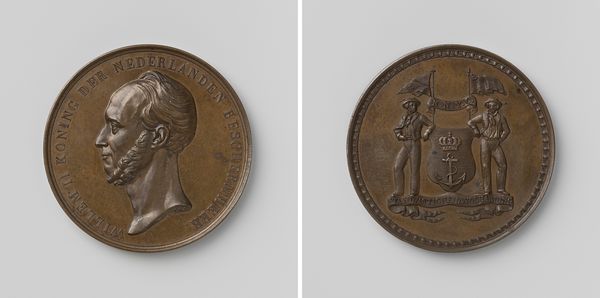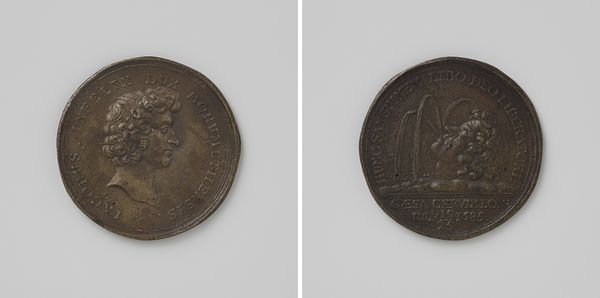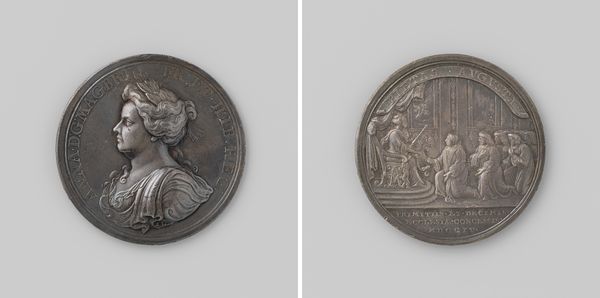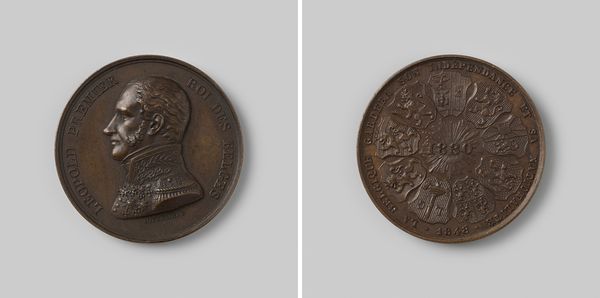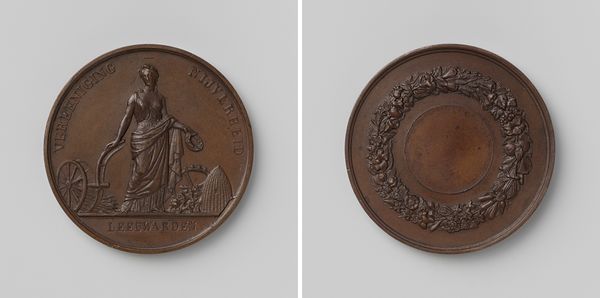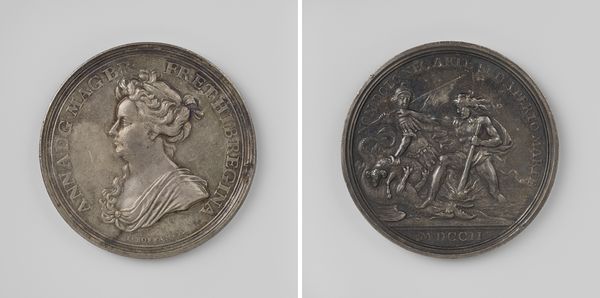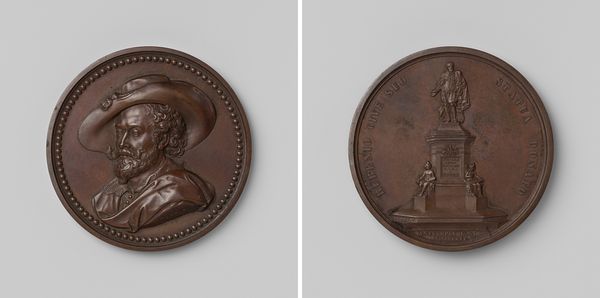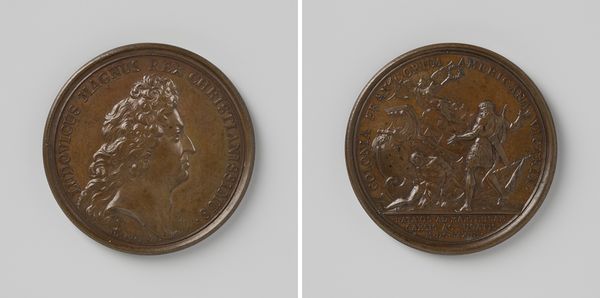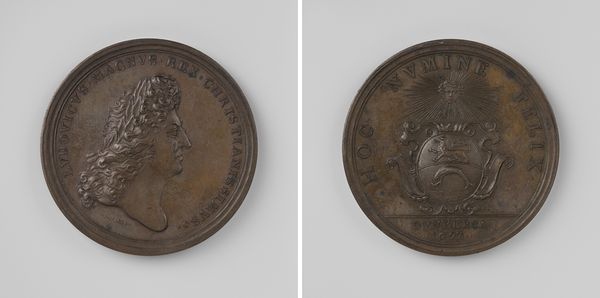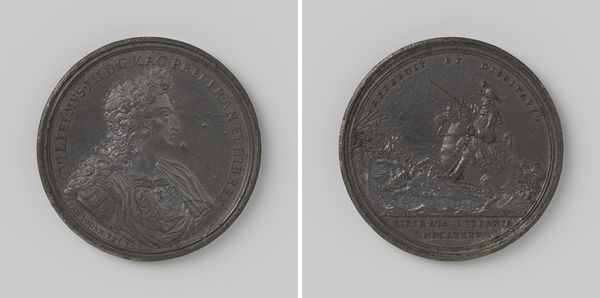
Nicaise de Keyser, penning geslagen door zijn leerlingen en vrienden 1839
0:00
0:00
laurentjosephhart
Rijksmuseum
metal, relief, bronze
#
portrait
#
metal
#
stone
#
sculpture
#
relief
#
bronze
#
history-painting
#
academic-art
#
statue
Dimensions: diameter 6.8 cm, weight 129.65 gr
Copyright: Rijks Museum: Open Domain
Editor: Here we have a bronze relief from 1839 titled "Nicaise de Keyser, penning geslagen door zijn leerlingen en vrienden" by Laurent Joseph Hart, currently housed in the Rijksmuseum. The dual-sided portrait, showing both Nicaise himself and a symbolic representation of his legacy, feels almost like a commemorative coin. What layers am I missing here? How do you interpret this work beyond just a historical record? Curator: It’s interesting to view this through a lens of artistic labor and the creation of legacies. This piece, "struck" by his students and friends, elevates De Keyser not just as an artist, but as a leader and teacher within a specific art world ecosystem. The coin commemorates him, but it also subtly hints at the socio-economic structure of artistic training at that time. How does that structure impact notions of individual artistic genius and reputation? Editor: That’s fascinating, I hadn’t considered that! It’s like they're collectively branding him and their studio all in one gesture. Are there particular symbols used here that speak to that? The armored figure on one side, for instance… Curator: Exactly! That side uses the traditional symbolism of artistic authority, militarized, of course, and sitting atop, as the inscription highlights, “Nicaise de Keyser, Struck by his Students and Friends.” However, to really dig deeper we need to ask whose narrative does the artist prioritize here? Whose stories or voices were elevated or erased by the very public performance of admiration encapsulated within this bronze coin? What do you think? Editor: It sounds like we're unpacking more than just an honorific artwork, but also questioning its implications of power, historical perspective and artistic visibility. The very materiality then becomes tied to social context and what we celebrate. Thank you, that really sheds light on what can be often overlooked. Curator: It's always about looking deeper into not just *what* we see, but *how* and *why*. The power of observation allows us all to read historical objects.
Comments
No comments
Be the first to comment and join the conversation on the ultimate creative platform.
